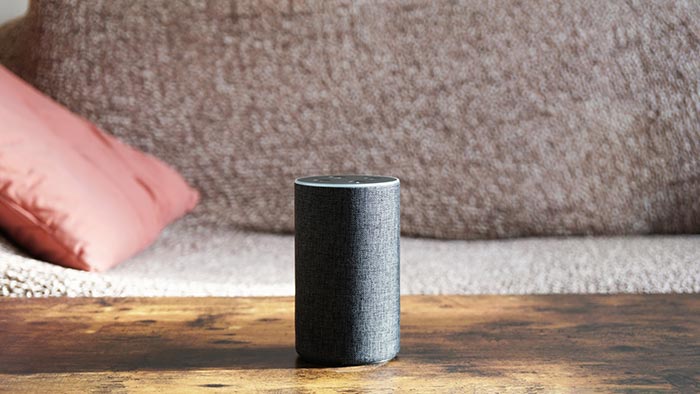Working from home through your smart speaker
By Danula Hettiachchi and Dr Jorge Goncalves, School of Computing and Information Systems
Digital voice assistants such as Alexa, Google Assistant and Siri are increasingly becoming our everyday companions. We can access them through everything from smart speakers to mobile phones and smartwatches.

A voice-based crowdsourcing platform can bring many benefits to users
Recent surveys have shown that 29.3% of the adult population in Australia owns a smart speaker, with 46.3% using them on a daily basis. While we mainly use digital voice assistants for simple tasks like setting timers and playing music, voice assistants are now capable of handling complex and continued activities. Gartner has predicted that 25% of digital workers will use conversational agents on a daily, and that 25% of employee interactions with business applications will be through voice by 2023. Leveraging on these promising advancements, we examined if we could transform the standard smart speaker that sits passively in your home into a productive work instrument.
Working from home is not a novel concept. People who participate in crowdsourcing typically work remotely. Crowdsourcing allows people to complete small tasks like providing labels for images in return for a reward.
The growing availability of household and personal voice assistants, including smart speakers, now provides an ideal opportunity to use them for crowdsourcing as well.
Traditionally, crowd work is completed through screen-based interfaces like computers or smartphones. The growing availability of household and personal voice assistants, including smart speakers, now provides an ideal opportunity to use them for crowdsourcing as well.
In our research we created CrowdTasker, a novel standalone voice-based crowdsourcing platform that can be accessed through a digital voice assistant. CrowdTasker provides all essential features of a standard online crowdsourcing platform.
Users can request tasks and complete them entirely through voice interactions. More importantly, in our study, we show that the task performance through a voice interface can match the performance of screen-based interfaces across a range of typical crowdsourcing tasks.

Traditionally, crowd work is completed through screen-based interfaces like computers or smartphones
As highlighted by the participants of our field deployment, a voice-based crowdsourcing platform can bring many benefits to users. It can allow them to access crowd work more quickly and conveniently by simply talking to the voice assistant whenever they want to work - a much easier process than having to sit at a desk, log in to a device, launch a browser and finally select a task. Users can also opt to multi-task when completing simple tasks, for example while cleaning around the house. A voice-based crowdsourcing platform can also improve the accessibility of crowd work by opening marketplaces to individuals with vision and motor disabilities.
From our findings, we propose a set of design guidelines relating to creating a voice-driven workflow, handling responses and recommending or allocating tasks for the design of future voice-based crowdsourcing systems. We also discuss best practices for creating voice-compatible crowd tasks.
Voice-based crowdsourcing systems aren’t a replacement for online crowdsourcing platforms. Yet we expect that our work will lay the foundation for different research avenues to explore voice-based crowd work as a noteworthy addition to the existing crowdsourcing eco-system, helping create more accessible and convenient platforms for crowd workers.
Related topics